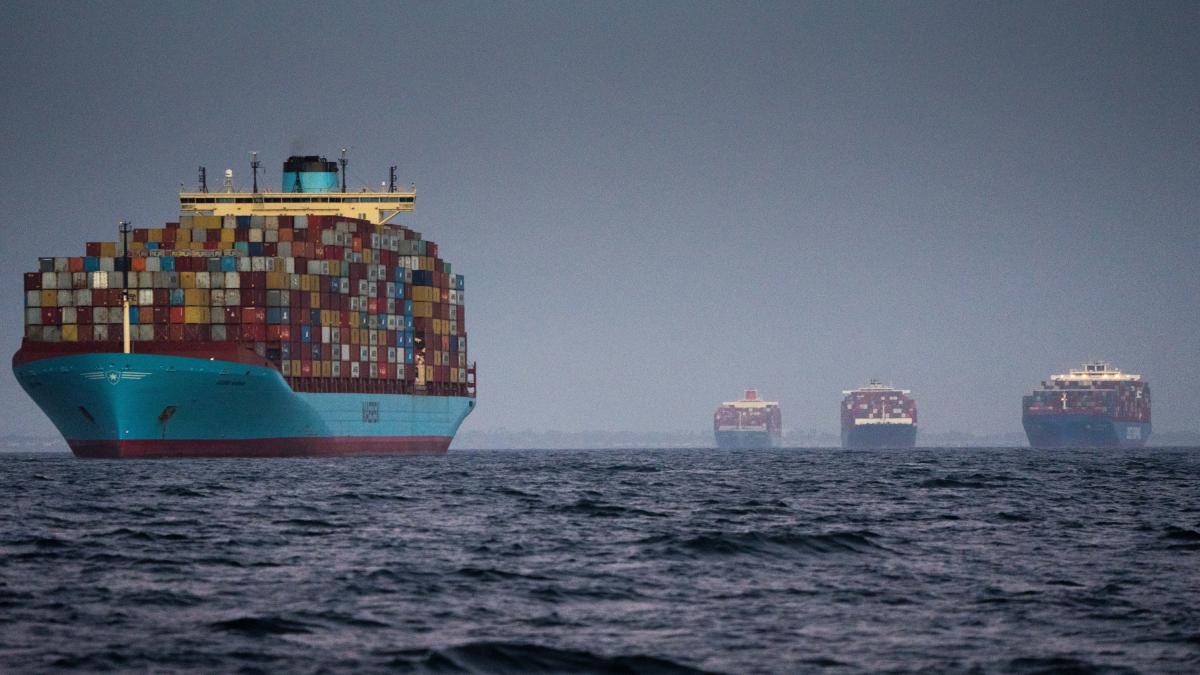The United States has so far not responded in any way to Russia’s announcement to increase its readiness.
Washington
When President of Russia Vladimir Putin ordered on Sunday, the country’s nuclear forces into a high state of readiness, many were likely to feel uncomfortable.
Is it really possible that Russia could use nuclear weapons to win the war in Ukraine?
Is there a risk that the world would be threatened by a nuclear war?
The announcement also received a lot of attention in the United States. “Russia’s nuclear forces on standby,” for example, was the headline on The Washington Post’s front page on Monday.
News channels CNN and Fox News ran through live analysts Monday commenting on the possible use of nuclear weapons. President From Joe Biden asked whether Americans should be concerned about nuclear war (he replied in one word: No).
The front page of The Washington Post on Monday.
That is exactly what Putin is hoping for, says an assistant professor of international security Jeffrey Treistman From the University of New Haven. He specializes in international relations, defense policy, and asymmetric warfare.
“Putin is trying to re-frame what kind of conflict it is. He should be deprived of that opportunity, ”says Treistman. “This is about Russia attacking Ukraine and violating international law.”
It would be good for Putin to turn his attention away from the situation in Ukraine – the war has not progressed as he hoped, and the international community has joined forces against Russia. Putin would like to see the world talk about a confrontation between the two great powers and a new Cold War instead of fighting Ukraine.
According to Treistman, Putin’s announcement was, above all, a message to the Russians, to his own people: NATO countries are threatening security so significantly that we are also forced to prepare for the use of nuclear weapons.
In the alternative, it was a warning to the United States and other Western countries: we have nuclear weapons, stay out of Ukraine.
Is it is unclear whether Putin’s announcement of a nuclear-weapon-ready state will have any concrete effect.
Strictly speaking, Putin ordered nuclear forces into a “special state of combat readiness”.
According to the Pentagon, the meaning of the order is unclear and is currently being analyzed. Treistman also considers the practical implications of the announcement to be unclear.
“The U.S. and Russia consistently have a number of aligned nuclear warheads ready to launch, regardless of whether standby has been raised or not,” says Treistman.
This has been the case for a long time. The policy is the wake of the Cold War.
Experts interviewed by AFP evaluatethat even under normal circumstances, Russia can launch its nuclear weapons in ten minutes, and there are about 1,600 nuclear weapons on standby.
As bad as putting nuclear weapons on standby sounds, virtually nothing has changed. The Russians may be carrying out some kind of additional checks on the functioning of nuclear weapons and ensuring the functioning of communication channels, but that is it.
If Russia were to really prepare for the use of nuclear weapons, it would probably raise its readiness without telling it.
“Ambiguity or ambiguity would have been a more worrying signal than an open statement,” Treistman says.
United States has so far not responded in any way to Russia’s announcement to increase its readiness.
That’s exactly the right line for Treistman and many other analysts.
President Joe Biden is commented Russian nuclear weapons flirting only very briefly. White House Press Officer Jen Psaki He noted that this was again just one attempt by Putin to fuel the situation.
The United States uses the so-called Defcon scale (defense readiness condition) to describe the level of defense preparedness and the threat to the country. A five-point scale of 1 means the highest possible level of readiness – a nuclear war is about to begin or has already begun.
The Pentagon never tells us what the current level of readiness is. However, the scale has been opened retrospectively.
So far, the highest level of readiness achieved has been 2, which has hurt once in history, during the Cuban Missile Crisis in 1962. At that time, the United States deployed medium-range nuclear missiles in Turkey, as a result of which the Soviet Union began deploying nuclear missiles in Cuba. As the situation escalated, there was a threat of a nuclear war between the great powers.
If Russia and the United States now settled on nuclear weapons, the situation would instantly become extremely explosive. It would increase the risk of misjudgments that could have catastrophic human consequences.
The illustrative case is from 1983. At that time a cold-nerved Soviet officer Stanislav Petrov was on duty when the surveillance system claimed the United States had fired five nuclear missiles toward Moscow. Petrov should have reported the launch to his superiors. It could have meant a nuclear war. However, Petrov trusted his instincts and believed it was a disturbance, as it were.
All right however, it is precisely because of nuclear weapons that the threshold for US intervention in Ukraine is so high.
In the Gulf War in 1990, Iraq invaded Kuwait without any justification – in the same way that Russia now does to Ukraine. At the time, the United States and its allies intervened urgently. Intervention was an easier decision than it is now, in part because Saddam Hussein led by Iraq had no nuclear weapons.
Now, because of the threat of nuclear war, Russia can be relatively confident that the United States and its allies will not directly defend Ukraine. President Joe Biden has repeatedly said that U.S. soldiers will not go to war against Russians in Ukraine. This may have convinced Putin that his attack will succeed.
“Putin’s behavior shows that he is using his strategic nuclear forces as a shield to promote traditional warfare,” said a professor specializing in nuclear weapons. Caitlin Talmadge the US Vox site in an interview.
The United States and Russia hold approx 90 percent the world’s nuclear warheads. The problem is not just the number of weapons, but the balance of the setup. If either decided to launch a nuclear weapon, the other would still have the option of one deadly counterattack.
“Everyone knows that a nuclear war is a war that cannot be won,” White House spokesman Jen Psaki said on Monday, referring to this very situation.
Reader Treistman considers it very unlikely that Russia would actually end up using nuclear weapons in Ukraine. At least the strategic nuclear weapons that caused widespread destruction – used in World War II in Hiroshima and Nagasaki – are ruled out, he said.
Instead, it is remotely possible that Russia will use tactical nuclear weapons in Ukraine. They are intended for the battlefield and cause more limited destruction than strategic nuclear weapons. Treistman and many other experts like still this is also quite an unlikely option.
However, not all. Politico magazine published on Monday an American expert on Russia, specifically a study of Putin Fiona Hillin interview. In an interview, Hill is asked if he believes Putin could use nuclear weapons.
“If Putin has a weapon at his disposal, he wants to use it,” Hill said. “If anyone thinks Putin wouldn’t do something that’s unusual and cruel, think again. Whenever you think ‘he wouldn’t do that, right?’ the answer is yes, he would. And of course he wants us to know that. ”
It is unclear how the West would react to the use of tactical nuclear weapons. Many commentators believe that a counterattack with nuclear weapons is not an option to keep the situation out of control. Instead, it would be possible to tighten sanctions further or take military action against Russia, albeit without nuclear weapons.
Politico said on Monday that the Pentagon would like a direct line of communication between the U.S. and Russian military leadership to alleviate and prevent the threat posed by nuclear weapons. It brings echoes directly from the Cold War when the “hot line” was set up for the same purpose after the Cuban missile crisis.
Russian nuclear disarmament has therefore been taken seriously, even at a high level.
However, Treistman is by far the most concerned about human rights abuses. He believes that similarities will be seen between the second war in Chechnya and the war in Ukraine. In Chechnya, Russia has repeatedly committed human rights abuses to get what it wants.
“We are now seeing the first signs of this in Ukraine,” Treistman says. He is currently writing a book to be published this summer When Bad States Winin which he has examined the circumstances in which states have violated human rights in order to quell political differences.
Violations can take many forms: bombing of civilian targets, rape, torture, execution of prisoners.
“This is a more likely way for Putin to escalate the situation than nuclear weapons.”
On Monday, human rights organizations estimate that Russia has used cluster bombs in Ukraine, for example, on several occasions. These are destructive weapons with poor hit accuracy – so they do not hit military targets accurately, but specifically damage civilians.
#Russian #attack #Putin #nuclear #weapons #war #Ukraine #hot #question #researcher #answers






